“Andrew told me he’d love to have a great job like mine so he could buy his dream car, a Nissan GT-R,” Lee recalls. “I asked him, ‘a GT-R? what’s that?’”
Lee soon found out. He deliberated for less than a day before deciding to buy his son the luxury sports car, which attracted attention wherever Andrew went, and it wasn’t long before Andrew realized his new vehicle could be a vehicle — to raise awareness about and money to support research for HLRCC. When Andrew died on April 21, 2019, nearly four years after his diagnosis, his dream car had become the basis of a nonprofit organization, Driven To Cure (DTC), that has raised more than $600,000 for research on HLRCC and other rare kidney cancers and become a source of information about the disease for individuals and families.

And that’s only the beginning of the legacy of Andrew Lee.
The head of a family-owned real estate development company, Lee says that Andrew, a business administration major, had planned to come work with him after college and eventually own and operate his own real estate brokerage firm, and to that end Andrew had spent his freshman spring break registering for summer real estate licensing courses. That plan went out the window when the excruciating abdominal pain Lee found his son in the day he came to collect Andrew from UNH turned out to be not appendicitis, as initially suspected, but internal bleeding, caused by a cancerous tumor that had eroded through his kidney wall. He was quickly transferred from Wentworth-Douglass Hospital in Dover to Boston’s Massachusetts General Hospital, where David Sweetser, MD, the chief of medical genetics, made the devastating diagnosis of HLRCC.
“Dr. Sweetser told us, ‘I think I know what this is, and I think it’s really bad,’” Lee says. “Andrew had about 20 minutes of ‘why me?’ but then it was like a faucet turning off. After that, it was just, ‘Dad, let’s beat this. Let’s find a cure.’”
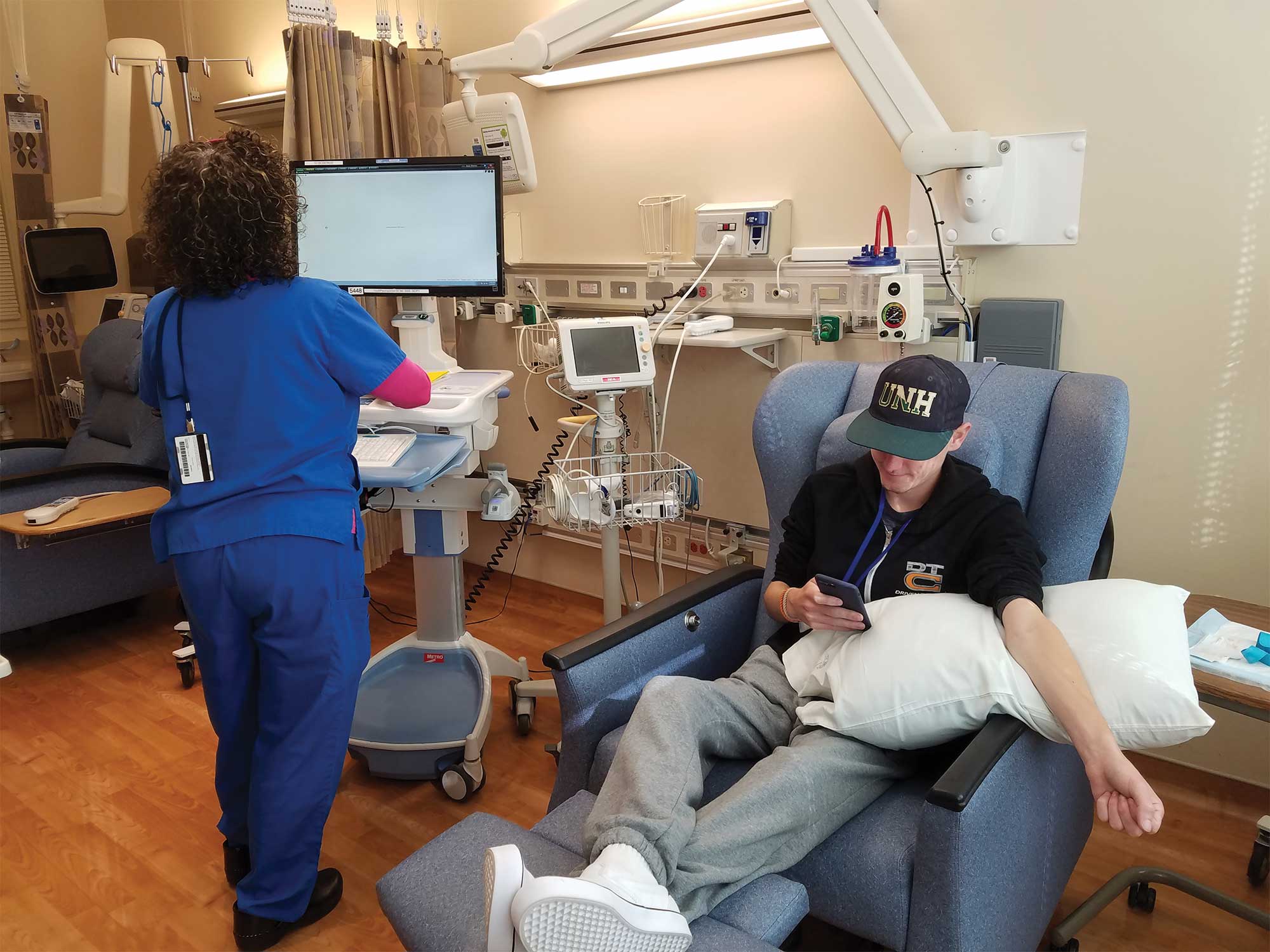
As of now, HLRCC has no known cure, but Mass General’s Sweetser knew that the National Institutes of Health (NIH) was the one place in the United States that was having success stabilizing patients and limiting the spread of their cancer. It also happened to be in the Lees’ back yard, and within short order Andrew was enrolled in a clinical trial that kept him stable for nearly 18 months — far longer than he’d originally been told he would survive. He got his GT-R, and he returned to UNH to complete the first semester of his sophomore year, flying home to Maryland every other weekend for treatment.
The side effects of the treatment were challenging, however, and after a semester of juggling treatments and a full schedule of business management courses, Andrew realized he needed to take a different approach. He’d already begun taking his GT-R to car shows, where the reason for his owning it inevitably came up, and the idea of turning the car into a nonprofit to raise money and awareness started to take hold. He came up with the name and a slogan — “Built to drive, driven to cure” — secured the Driven To Cure domain name for $7.99, and in January 2016 approached Paul College professor Andrew Earle about enrolling in what was then an experimental course for entrepreneurship-minded students, “Launching New Ventures,” to formalize his fundraising efforts.
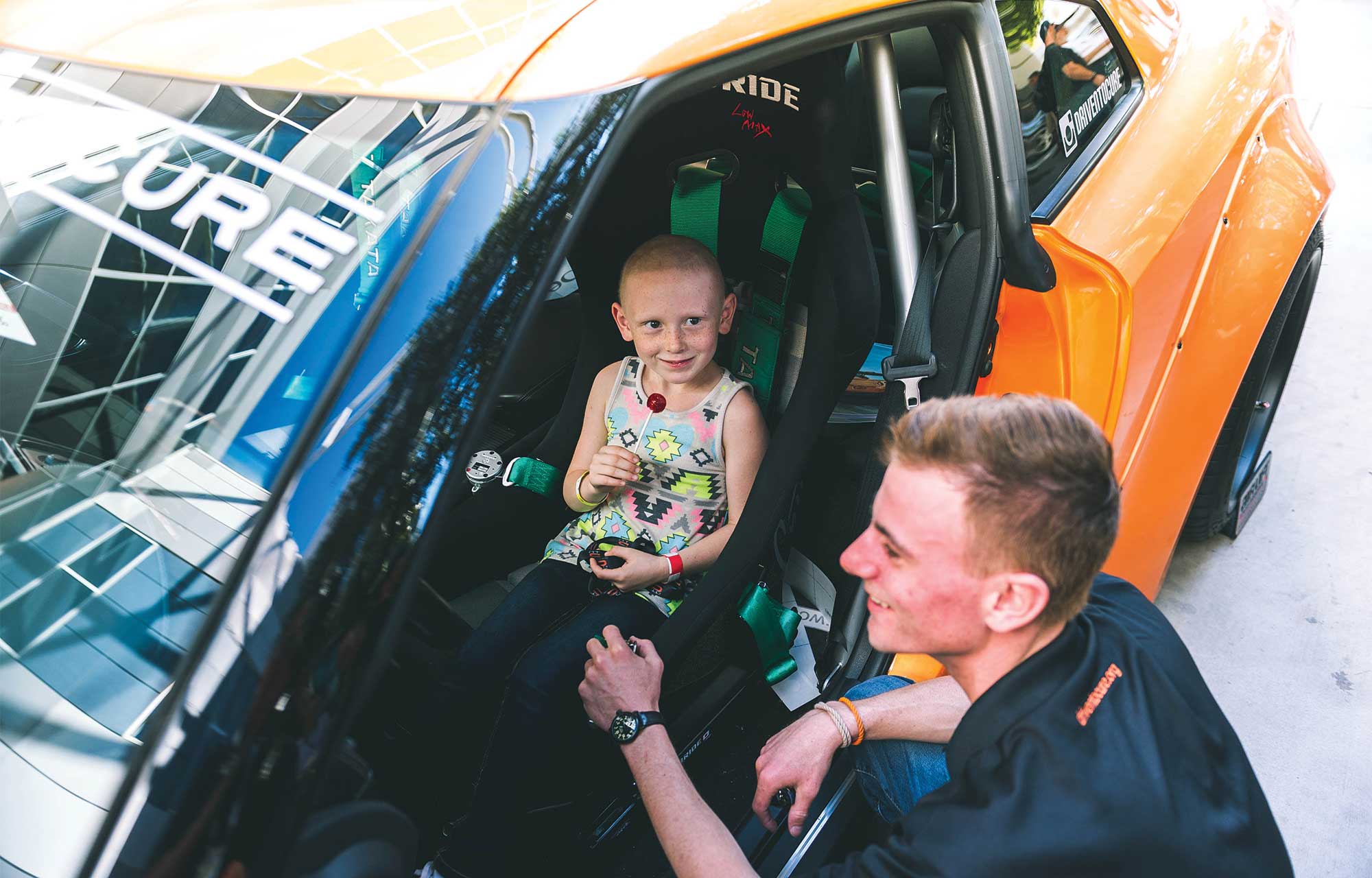
“It’s a question that’s come up before,” Lee acknowledges. “Why didn’t you use the proceeds from Driven To Cure to pay for Andrew’s treatments?” Lee says that Andrew understood he came from a privileged background, and that his family could find ways to cover his treatments, even if those ways were financially burdensome. “He knew there were other people out there for which that simply wasn’t an option. His goal was always to help others.”

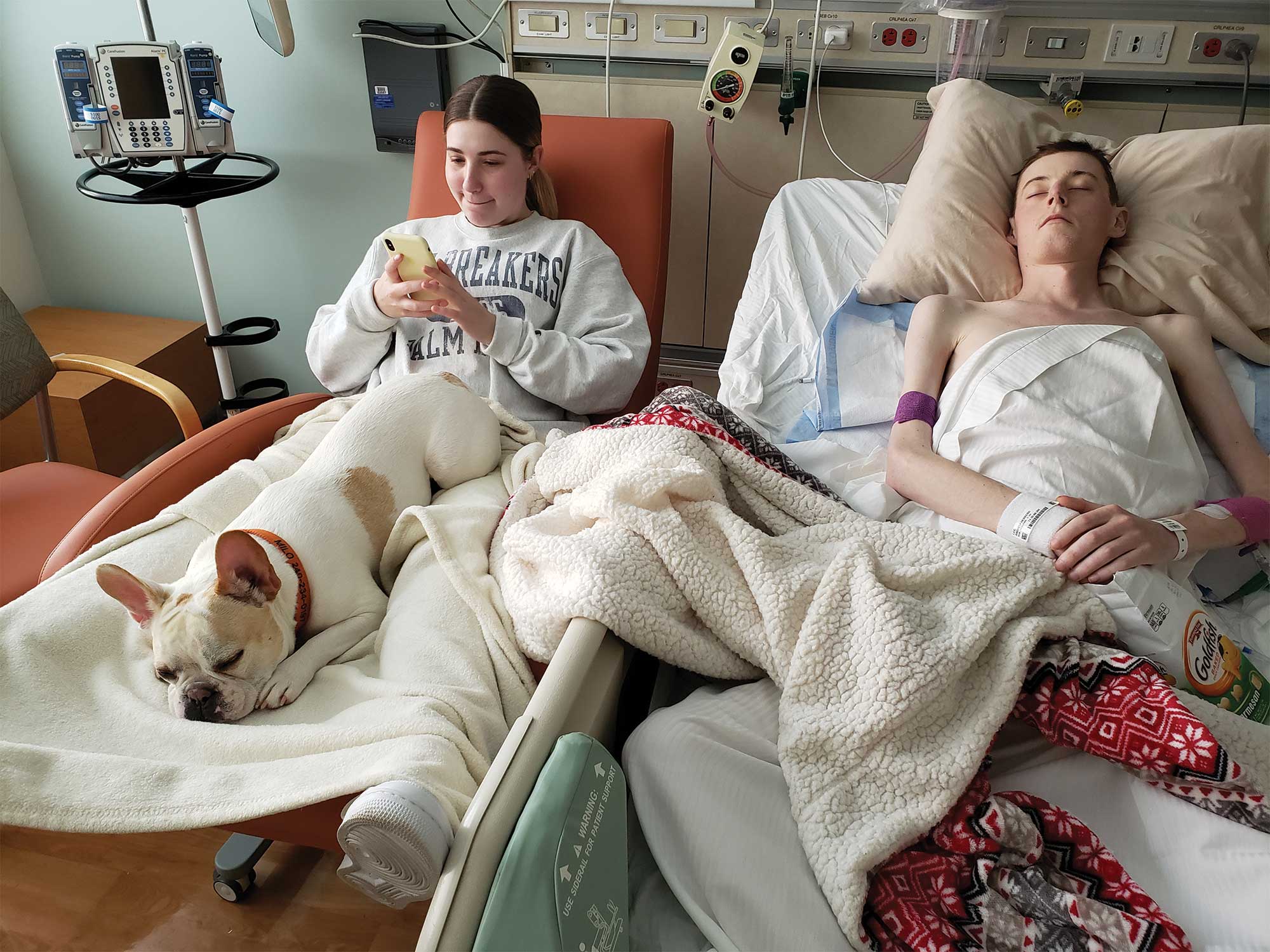
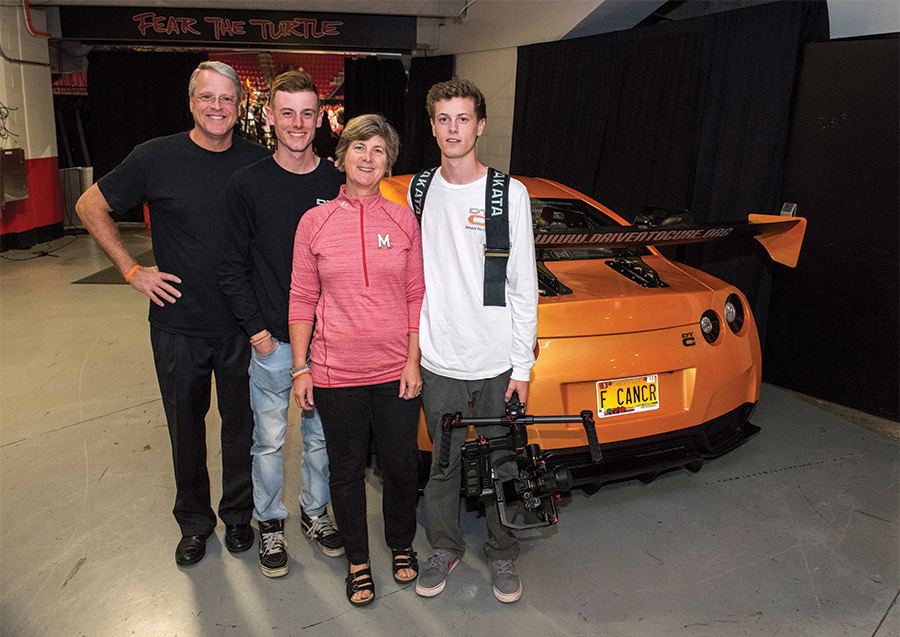
He’s also had a lasting impact at NIH.
“I think it’s his humanity that touched us the most,” says NIH Director Francis Collins, MD, who met Andrew when he made his first DTC donation to the institute and became a friend thereafter. “He always had time to share his story, to encourage another child or adult struggling with a frightening diagnosis.” And of course, “He’d give thrills to the kids at The Children’s Inn at NIH when he rumbled into the parking lot with his 700-horsepower GT-R.”

In addition to the donation of his kidney tissue, which is critically important for understanding HLRCC and its future treatment, Andrew allowed his hospice stay and his final hours to be photographed, and those photos used by NIH for educational purposes, training students in the pain and palliative care program. He also played a role in the development of the NIH’s canine therapy program — with a little help from Milo, the French bulldog he shared with longtime girlfriend Hailey Kellogg ’18, who became the first dog to pay an inpatient visit to the NIH hospice unit. Because NIH is a government agency (it’s a part of the U.S. Department of Health and Human Services), Milo needed to get approved before he could be brought into the facility last year. “I think he got cleared for access faster than the president of the United States,” Lee laughs.
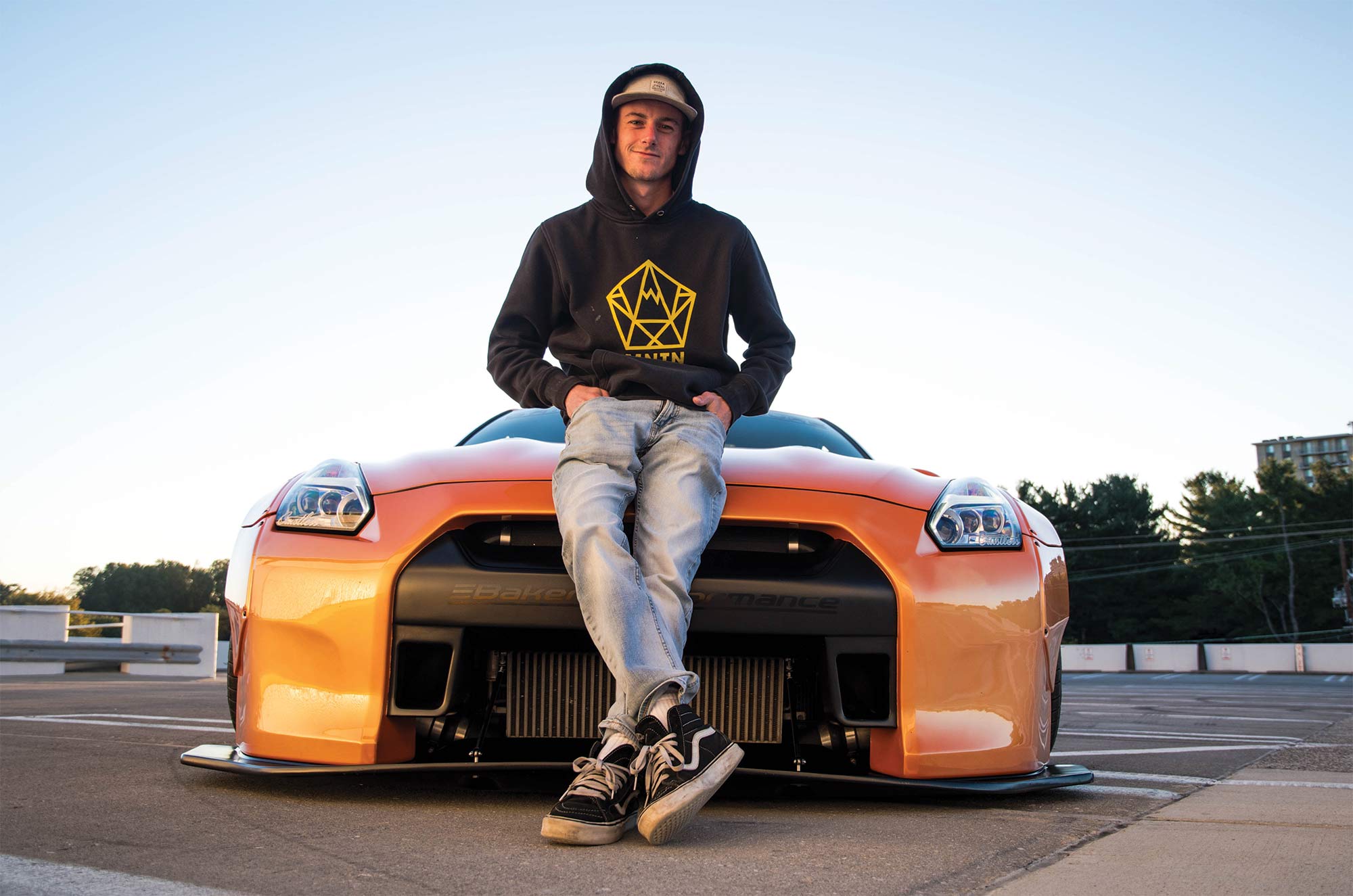
Indeed, the road that Andrew envisioned is already becoming a reality. In January, Lily Cockrum, the 8-year-old from North Carolina who was at risk for HLRCC, traveled to NIH for several days of medical testing. Having helped facilitate introductions and Lily’s appointments with members of NIH’s HLRCC clinical team, Bruce Lee was on hand to support Lily and her mother, Dawn, and was among the first to hear the good news: The spot on Lily’s kidney that local doctors had suspected was an HLRCC tumor is a benign cyst. Because she has the FH mutation, however, Lily remains at risk for HLRCC, and she will now be monitored regularly by NIH — the youngest patient to enter its HLRCC protocol. If she does develop the disease, it will be caught almost immediately.
Lee would certainly be forgiven if he were to voice a little wistfulness about the Cockrums’ good fortune relative to his family’s own. But the word that he uses when he shares the story is proud. “Andrew’s goal was to raise awareness so people could diagnose and catch HLRCC early,” he says. “Driven To Cure is doing that.”